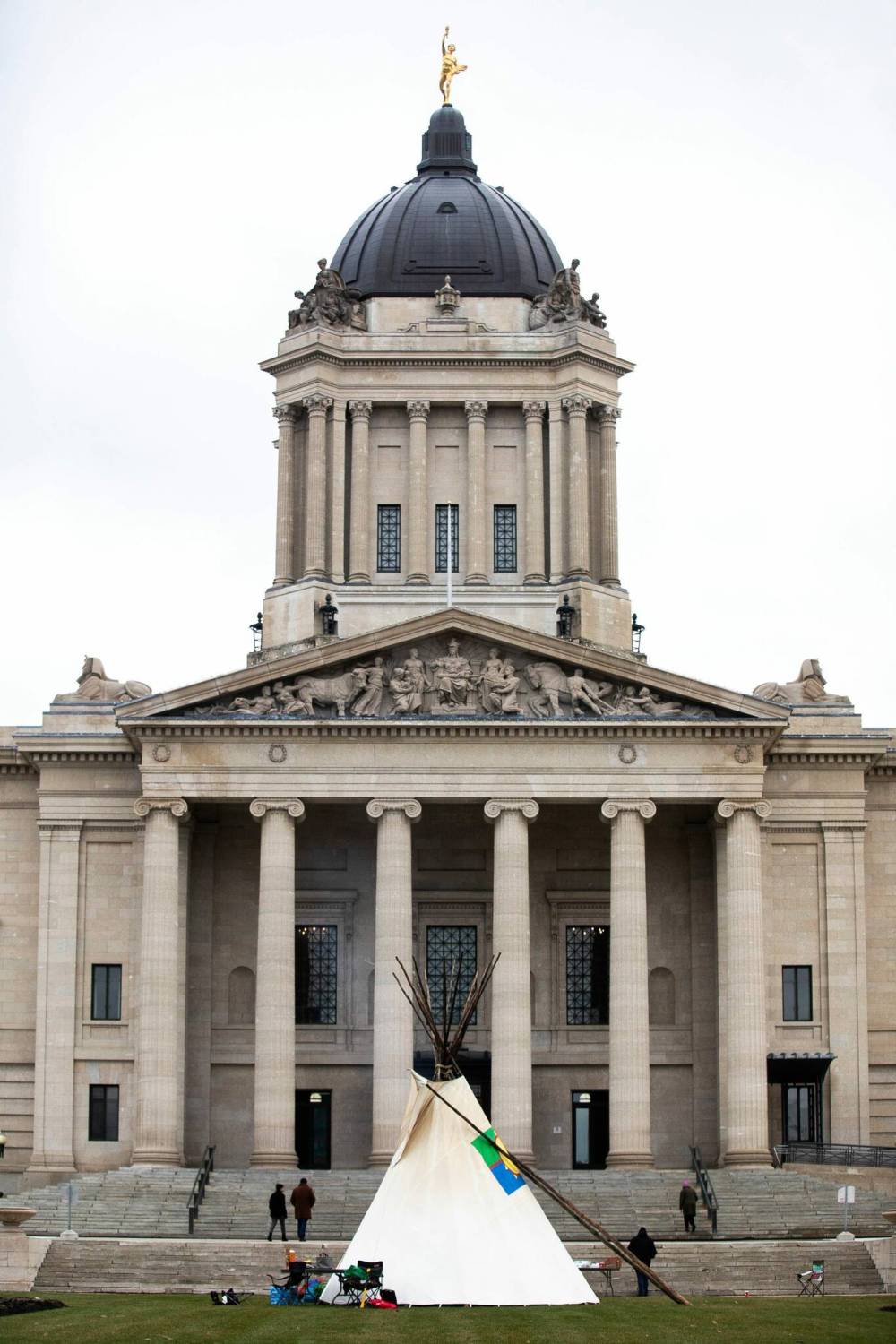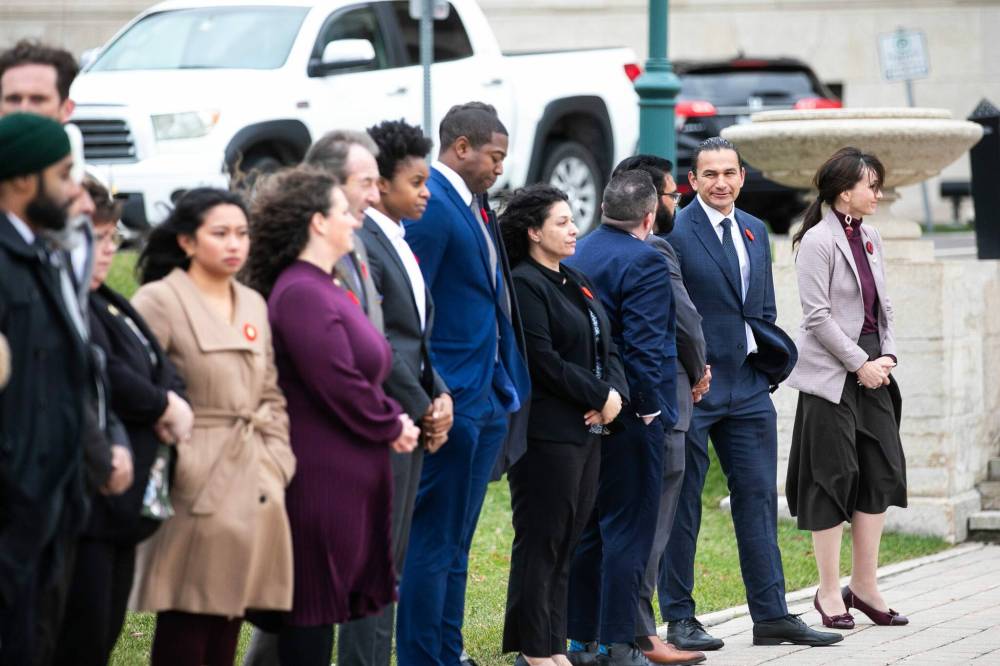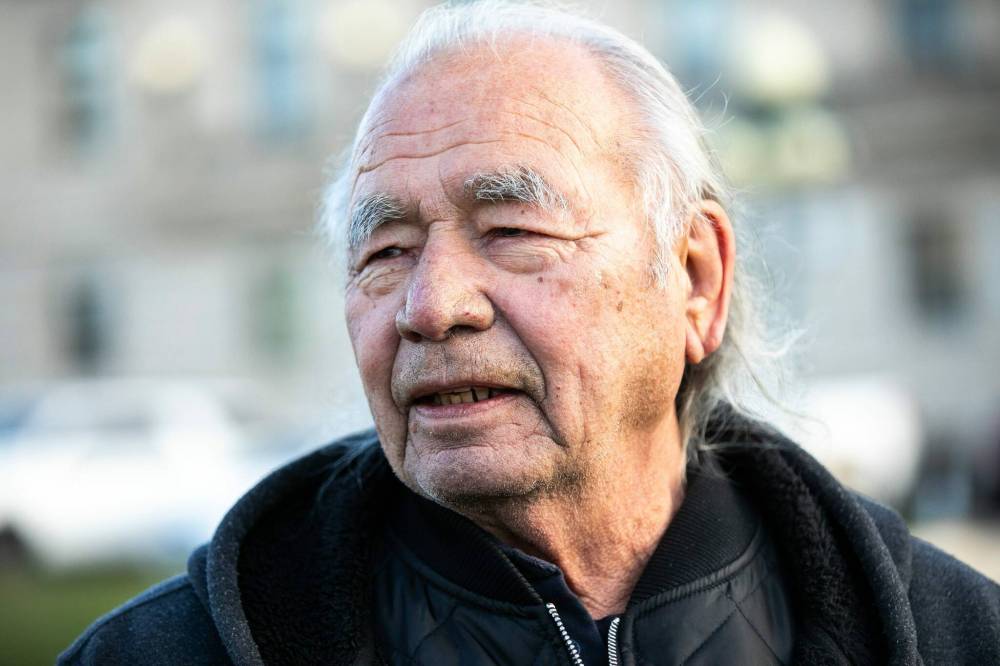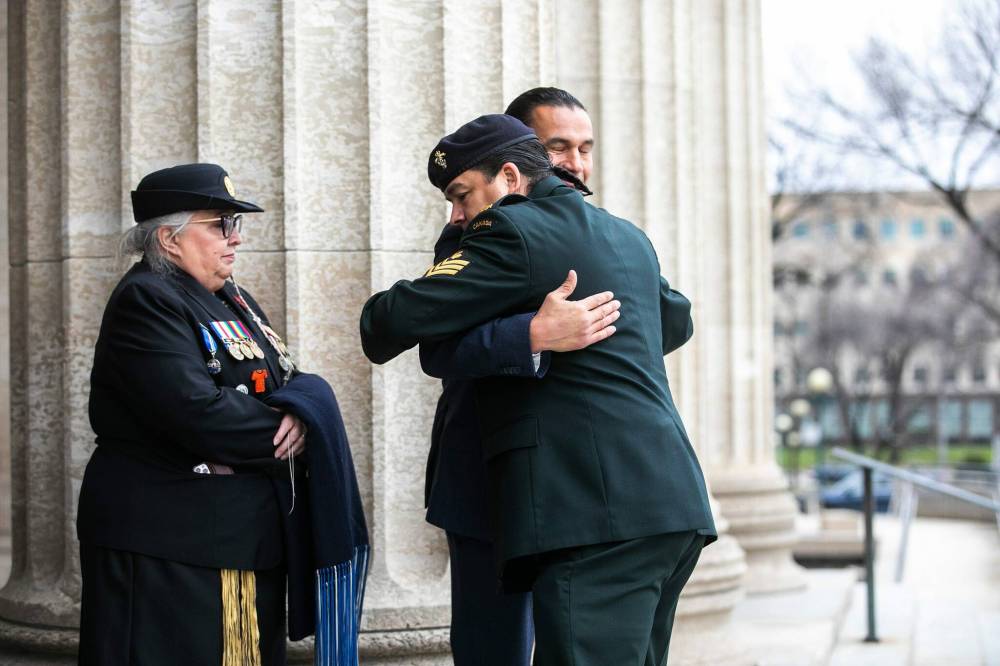Manitobans in mourning threw tobacco into a sacred fire on the front lawn of the provincial legislature Monday to honour the life and legacy of Murray Sinclair.
With his family’s blessing, First Nations community leaders lit a memorial for the Manitoba judge, senator and chair of the Truth and Reconciliation Commission of Canada where the Queen Victoria statue once stood outside 450 Broadway.
“A true example of his impact is me standing here. If you knew me and if you look at me, I’m the poster child for white male colonial privilege in this country,” a teary-eyed Rob Duerksen said moments after stepping out of the teepee surrounding the sacred fire.

MIKAELA MACKENZIE / FREE PRESS
A sacred fire was lit inside a teepee in front of the Manitoba Legislative Building to honour Murray Sinclair in Winnipeg on Monday.
“He’s made me realize that we have a lot of work to do — I have a lot of work to do.”
Sinclair, whose spirit name is Mizhana Gheezhik (The One Who Speaks of Pictures in the Sky), died early Monday in Winnipeg. He was 73.
Public servants, teachers and a former police officer, who indicated he deeply respected the renowned judge even though they often sat on opposite sides of courtrooms, were among those who stopped by the memorial.
Relatives and friends paid visits, but there were also strangers who admired Sinclair from afar as an Anishinaabe and Canadian luminary.
Premier Wab Kinew joined representatives from Treaty One, Mama Bear Clan and Ogijiita Pimatiswin Kinamatwin, to build the teepee.
Kinew, a longtime friend of the Sinclair family, said it is only fitting that “one of the best,” be honoured on the Manitoba legislature’s grounds.

MIKAELA MACKENZIE / FREE PRESS
Politicians wait in line as people pay their respects to Murray Sinclair at the Manitoba Legislative Building.
Details about a traditional funeral, which is anticipated to happen later this week, will be announced in the coming days.
Until then, a sacred fire is “the interface” through which people can give offerings and pray for him on his journey to the afterlife, the premier said, noting Sinclair and wife Katherine Morrisseau-Sinclair, who died on June 27, were devoted practitioners of the Midewin (traditional spirituality of the Anishinaabe people).
“Consistently and time and time again, Murray Sinclair faced tough times and responded with love,” Kinew told reporters.
While presiding over the NDP government’s swearing-in ceremony just over a year ago, Sinclair shared advice with Kinew. “You have to learn to love the people, even when they do not love you,” he said at the time.
During that event at the Leaf, Sinclair called electing the province’s first First Nations premier “Manitoba’s true act of reconciliation.”
On Monday, Kinew credited Sinclair as “one of the key architects of the era of reconciliation.”

MIKAELA MACKENZIE / FREE PRESS
Jim Sinclair speaks with the Free Press after paying his respects to his cousin Murray Sinclair.
“As we begin to mourn his loss and contemplate what life would be like without him, I think we have to contend with the ultimate question of: ‘Now that we’ve been left to ourselves as Canadians, how are we going to take it from here?’” the premier said.
Jim Sinclair described his cousin, who was seven years his junior, as a family man who was incredibly well-read and thoughtful, and who also had a playful side that was typically hidden from his public life.
“I remember we had a walk once for the (Selkirk) Friendship Centre to raise money for something. I had a motorcycle so I was the marshal… He said, ‘Can I ride your bike?’ He didn’t come back for three hours,” the 80-year-old recalled, followed by a chuckle.
“I didn’t mind — we pulled tricks on each other, as cousins do.”
For Duerksen, Sinclair’s intelligence, thoughtfulness and advocacy were what made him stand out as a leader.
The men’s wives were friends, but they only met in passing, he said, noting he attended numerous events to hear the late senator speak.

MIKAELA MACKENZIE / FREE PRESS
Premier Wab Kinew greets visitors at the entrance to the Manitoba Legislative Building to greet people after paying their respects to Murray Sinclair.
Duerksen headed to the legislature shortly after hearing about Sinclair, whose death he called a loss for humanity.
“It’s way bigger than Manitoba’s loss. In Canada, he was on a national stage. Even internationally, he just represented the people, his people, so well,” he said.
maggie.macintosh@freepress.mb.ca

Maggie Macintosh
Education reporter
Maggie Macintosh reports on education for the Free Press. Originally from Hamilton, Ont., Maggie was an intern at the Free Press twice while earning her degree at Ryerson’s School of Journalism (now Toronto Metropolitan University) before joining the newsroom as a reporter in 2019. Read more about Maggie.
Funding for the Free Press education reporter comes from the Government of Canada through the Local Journalism Initiative.
Every piece of reporting Maggie produces is reviewed by an editing team before it is posted online or published in print — part of the Free Press‘s tradition, since 1872, of producing reliable independent journalism. Read more about Free Press’s history and mandate, and learn how our newsroom operates.
Our newsroom depends on a growing audience of readers to power our journalism. If you are not a paid reader, please consider becoming a subscriber.
Our newsroom depends on its audience of readers to power our journalism. Thank you for your support.